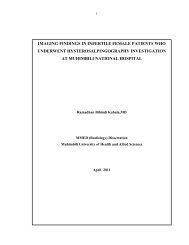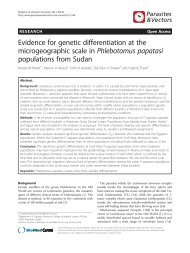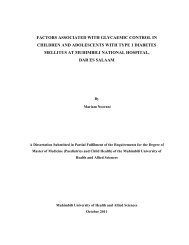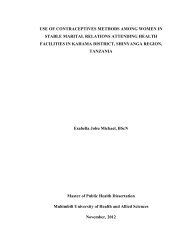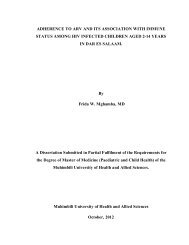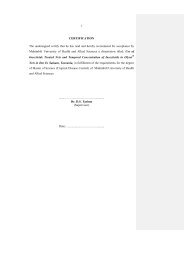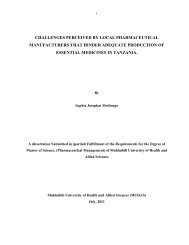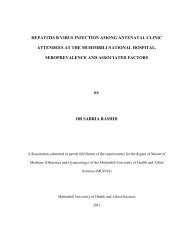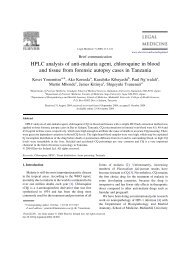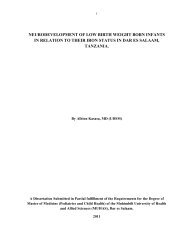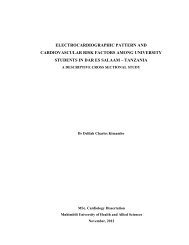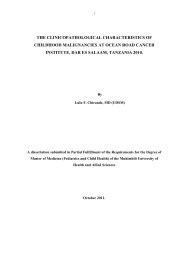DISSERTATION WORK MSAFIRI KABULWA.pdf
DISSERTATION WORK MSAFIRI KABULWA.pdf
DISSERTATION WORK MSAFIRI KABULWA.pdf
Create successful ePaper yourself
Turn your PDF publications into a flip-book with our unique Google optimized e-Paper software.
19<br />
seen a student chewing or snuffing other forms of tobacco. The questionnaire was then<br />
administered to 60 students (30 boys, 30 girls).<br />
After analysis, all those factors which were rated by 50% or more respondents as having an<br />
influence on starting using tobacco were picked for the construction of the final questionnaire.<br />
Therefore the final questionnaire included use of other forms of tobacco. The final<br />
questionnaire consisted of 52 questions (6 for demographic variables, 15 for prevalence of<br />
tobacco use, 19 for knowledge of detrimental effects of tobacco use and 12 for factors<br />
influencing tobacco use).<br />
7.10. Data management and analysis<br />
7.10.1. Data entry<br />
All questionnaires returned by students were marked and coded. Data was entered into the<br />
computer using SPSS software version 13. After checking for accuracy (data cleaning), the<br />
data were analyzed by a statistician.<br />
7.10.2. Statistical analysis<br />
7.10.2.1: Constructing variables and coding for analysis<br />
The independent variables studied were location of school, sex, type of school and year of<br />
study. The location of school was dichotomized as city centre and outskirt; sex into boys and<br />
girls; type of school into public and private. Year of study was coded as 1 (form 1), 2 (form 2)<br />
and 3 (form 3). These independent variables were coded as follows; location of school (0 = city<br />
centre, 1 = outskirt), sex (0 = boys, 1= girls), type of school (0 = public, 1 = private), year of<br />
study (0 = form 1, 1 = form 2, 2 = form 3).<br />
Prevalence of tobacco use was measured for the three types of tobacco use: dipping, chewing<br />
and smoking. For each type of tobacco use the prevalence was determined at three levels: ever<br />
heard, ever seen and ever used. The responses were coded as 0 = yes and 1 = no or never.<br />
Therefore prevalence of tobacco use was assessed by asking a student if had ever heard and



